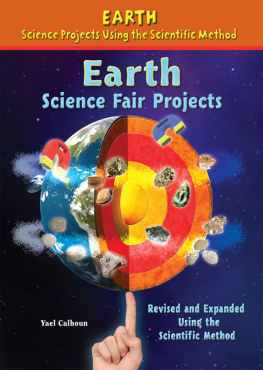Garret Romaine - Little Learning Labs: Geology for Kids, abridged paperback edition: 26 Projects to Explore Rocks, Gems, Geodes, Crystals, Fossils, and Other Wonders of the Earths Surface; Activities for STEAM
Here you can read online Garret Romaine - Little Learning Labs: Geology for Kids, abridged paperback edition: 26 Projects to Explore Rocks, Gems, Geodes, Crystals, Fossils, and Other Wonders of the Earths Surface; Activities for STEAM full text of the book (entire story) in english for free. Download pdf and epub, get meaning, cover and reviews about this ebook. year: 2019, publisher: Quarry Books, genre: Children. Description of the work, (preface) as well as reviews are available. Best literature library LitArk.com created for fans of good reading and offers a wide selection of genres:
Romance novel
Science fiction
Adventure
Detective
Science
History
Home and family
Prose
Art
Politics
Computer
Non-fiction
Religion
Business
Children
Humor
Choose a favorite category and find really read worthwhile books. Enjoy immersion in the world of imagination, feel the emotions of the characters or learn something new for yourself, make an fascinating discovery.

- Book:Little Learning Labs: Geology for Kids, abridged paperback edition: 26 Projects to Explore Rocks, Gems, Geodes, Crystals, Fossils, and Other Wonders of the Earths Surface; Activities for STEAM
- Author:
- Publisher:Quarry Books
- Genre:
- Year:2019
- Rating:3 / 5
- Favourites:Add to favourites
- Your mark:
Little Learning Labs: Geology for Kids, abridged paperback edition: 26 Projects to Explore Rocks, Gems, Geodes, Crystals, Fossils, and Other Wonders of the Earths Surface; Activities for STEAM: summary, description and annotation
We offer to read an annotation, description, summary or preface (depends on what the author of the book "Little Learning Labs: Geology for Kids, abridged paperback edition: 26 Projects to Explore Rocks, Gems, Geodes, Crystals, Fossils, and Other Wonders of the Earths Surface; Activities for STEAM" wrote himself). If you haven't found the necessary information about the book — write in the comments, we will try to find it.
Dig in and learn about the Earth under your feet. Little Learning Labs: Geology for Kids features 26 simple, inexpensive, and fun experiments that explore the Earths surface, structure, and processes.
This family-friendly guide explores the wonders of geology, such as the formation of crystals and fossils, the layers of the Earths crust, and how water shapes mountains, valleys, and canyons. There is no excuse for boredom with these captivating STEAM (Science, Technology, Engineering, Art & Math) activities.
In this book, you will learn:
The popular Little Learning Labs series (based on the larger format Lab for Kids series) features a growing list of books that share hands-on activities and projects on a wide host of topics, including art, astronomy, geology, math, and even bugsall authored by established experts in their fields. Each lab contains a complete materials list, clear step-by-step photographs of the process, as well as finished samples. The activities are open-ended, designed to be explored over and over, often with different results. Geared toward being taught or guided by adults, they are enriching for a range of ages and skill levels. Gain firsthand knowledge on your favorite topic with Little Learning Labs.
Garret Romaine: author's other books
Who wrote Little Learning Labs: Geology for Kids, abridged paperback edition: 26 Projects to Explore Rocks, Gems, Geodes, Crystals, Fossils, and Other Wonders of the Earths Surface; Activities for STEAM? Find out the surname, the name of the author of the book and a list of all author's works by series.












